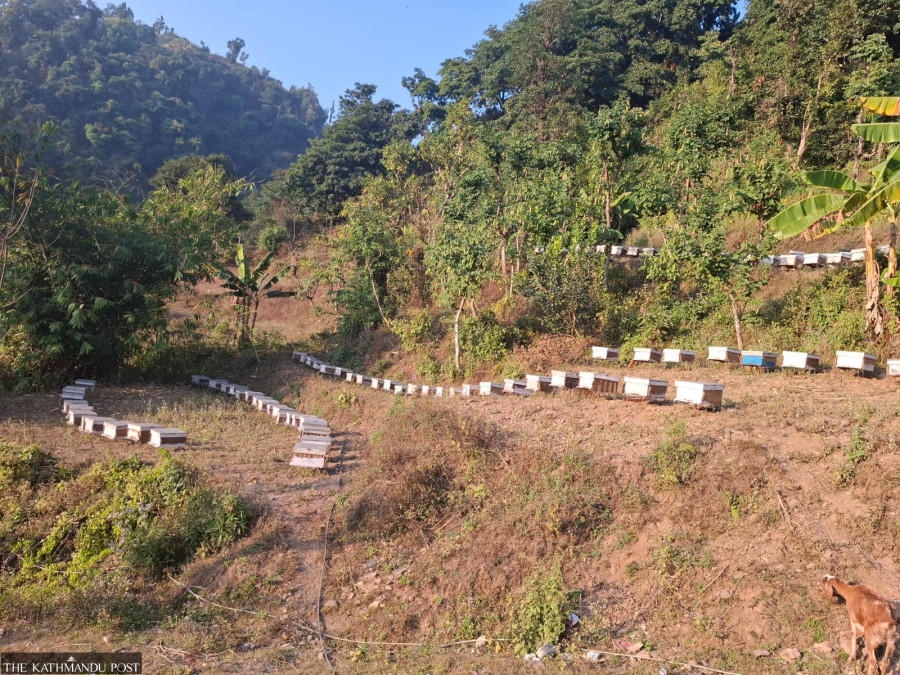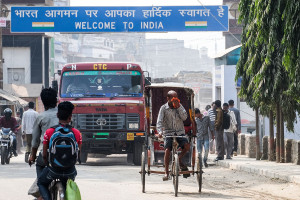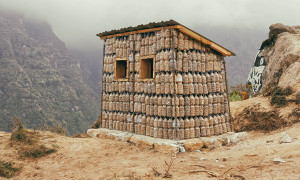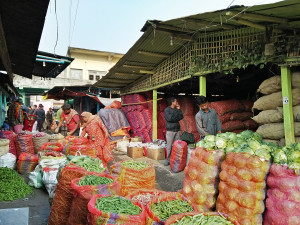Money
Chepang beekeepers taste success in honey business
The indigenous community has been campaigning to conserve Chiuri trees, which provide nectar for bees.
Pratap Bista
Dipan Chepang of Kankada, Raksirang rural municipality, has built a house worth Rs2.5 million in his village with earnings from beekeeping. He is educating his three children and has also purchased a motorbike to commute between Bhandara, Lothar, and Hetauda.
In addition to his thriving business, he remains actively involved in social work within the village.
Before venturing into beekeeping, Dipan struggled even to feed his family.
However, his life improved when he started beekeeping five years ago with 10 beehives.
Now he has 210 hives and is able to lend money to his friends and relatives.
Last year, Depan earned Rs1.53 million by selling honey, and he expects to earn Rs1.8 million this year. By the end of January, he had already sold honey worth Rs800,000.
“I have extracted honey three times so far, with three more extractions remaining. The weather is favourable this year and I expect good prices,” he said.
Beekeepers in the village sell honey to traders at Rs350 per kg. Aaitaram Chepang, who owns 150 beehives, has sold honey worth Rs600,000 and expects to make Rs1.5 million this year.
The honey produced by the Chepang families in Kankada, Raksirang, is being sold through Jana Chetana Agriculture Cooperative in Lothar. The cooperative buys raw honey from farmers, processes it using machines, and sells it at Rs500 per kg.
Dinesh Chepang, marketing manager of the cooperative, said that the demand for Chiuri (Nepali butter tree) honey has increased sharply due to its unique quality and taste.
The cooperative, which consists of members from the Chepang community, supplies honey to Himalayan Honey, a company based in Kathmandu.
“So far this year, we have sold 20 tonnes of honey, but the demand is much higher,” said Dinesh. “As production has increased, we aim to sell 50 tonnes this year.”
Last year, the cooperative sold 40 tonnes of honey. Currently, there are 5,500 beehives in Kankada.
Last year, the cooperative sold honey worth over Rs20 million and expects to generate Rs30 million this year. The number of beekeepers has grown from 80 to over 100 this year.
Chiuri honey, which is harvested between November and March, has been gaining popularity in the market.
In the past, Chepang families transported honey to Lothar by carrying it on their backs. Farmers who brought bees to the village for pasture used to sell honey worth between Rs500,000 and Rs1.5 million.
However, the Chepang community has restricted outsiders from bringing bees into their area for the past two years.
Previously, farmers of the Silinge Community Forest Users’ Group, which has vast Chiuri forests, charged Rs150 per hive for bee pasturing, while landowners charged Rs100 per hive.
Kankada alone has more than 200,000 Chiuri trees.
“We have completely banned outsiders from pasturing bees here,” said Singha Lal Chepang, the ward chairman. “The locals have started commercial beekeeping and are also earning well from it.”
Farmers in the area rear Apis cerana (Asian honeybee) and Apis mellifera (European honeybee) bees in modern hives.
Traditional honey hunting, particularly among indigenous communities such as Gurungs and Chepangs, has been practised for generations.
These communities harvest wild honey from giant Himalayan bees (Apis laboriosa), often scaling dangerous cliffs to extract honey from natural hives.
This form of honey collection is still prevalent in remote mountainous regions, particularly in areas like Lamjung, Manang, and Dhading.
Chiuri is deeply connected to the cultural and daily life of the Chepang community. Locals have actively campaigned to conserve Chiuri trees for the last few years.
Honey is listed under Nepal’s Trade Integrated Strategy 2023 as a promising exportable item in the small and cottage industries category. The NTIS 2023 was implemented in mid-July 2023.
According to the Department of Customs, Nepal exported 10 tonnes of honey worth Rs57.47 million in the fiscal year 2023–24.
The primary export destinations were Australia and the United States, followed by the Netherlands.
Nepali honey is gaining recognition in international markets due to its unique floral contents such as Chiuri, mustard, and high-altitude rhododendron.




 10.12°C Kathmandu
10.12°C Kathmandu














